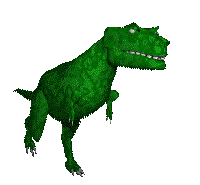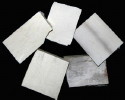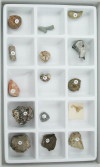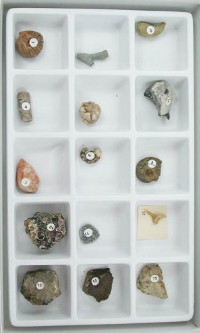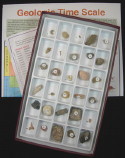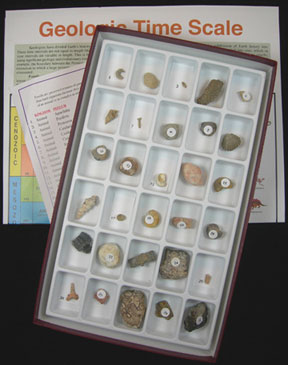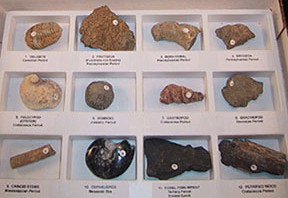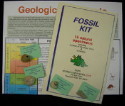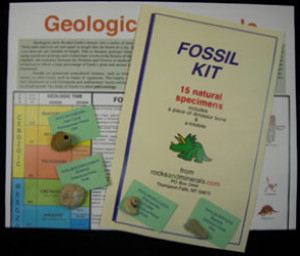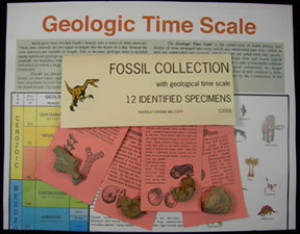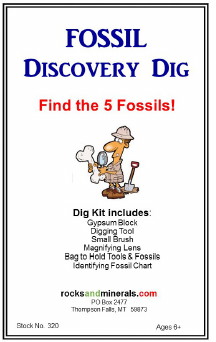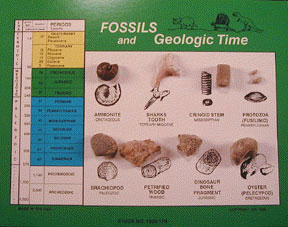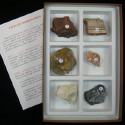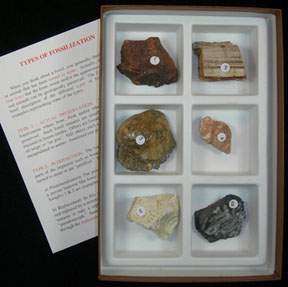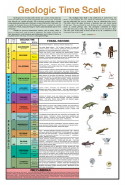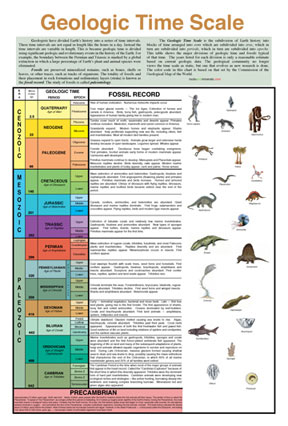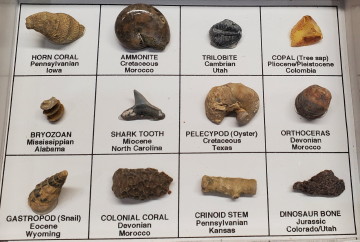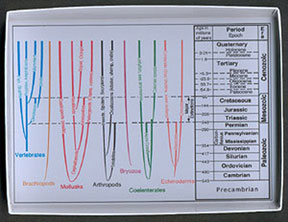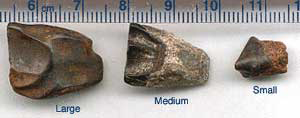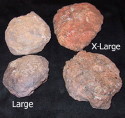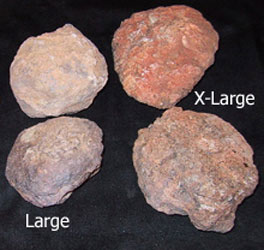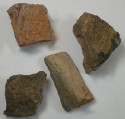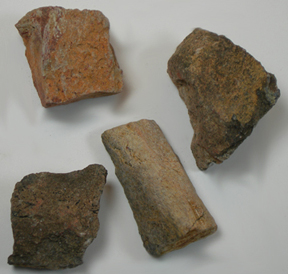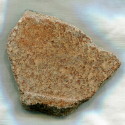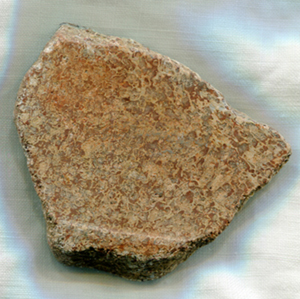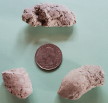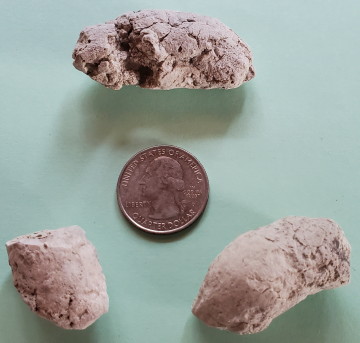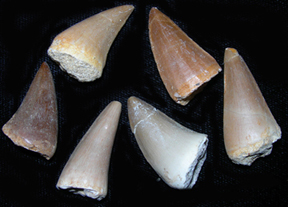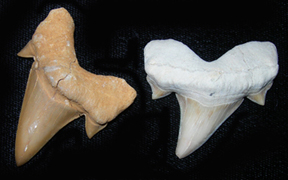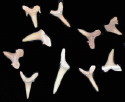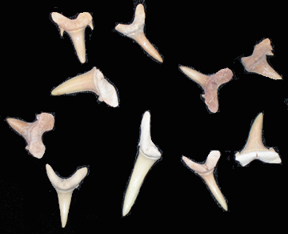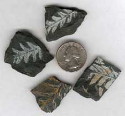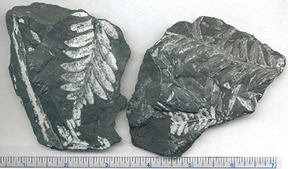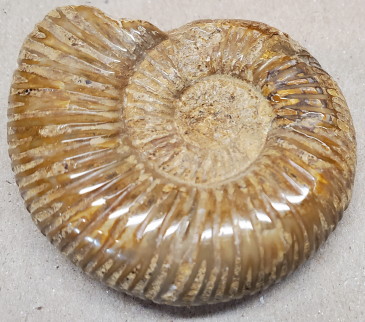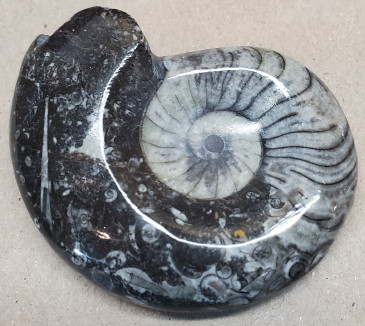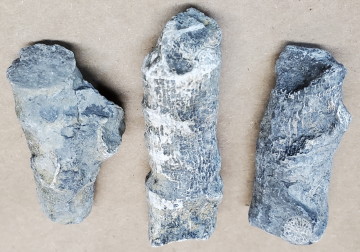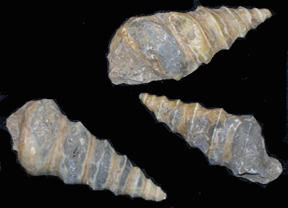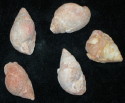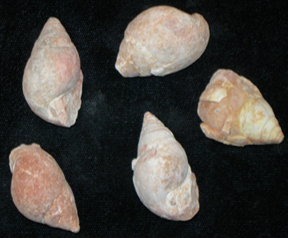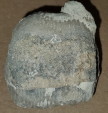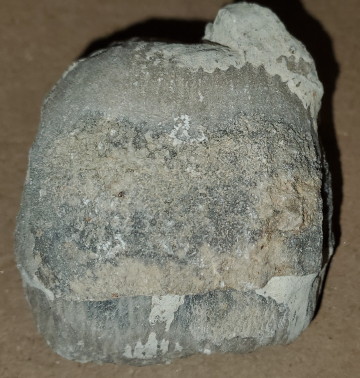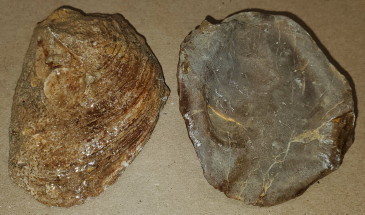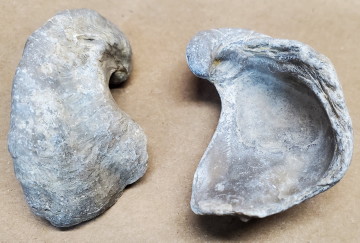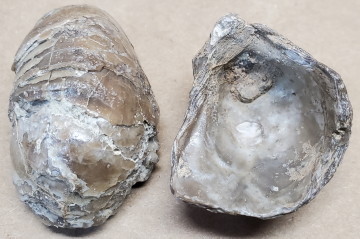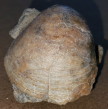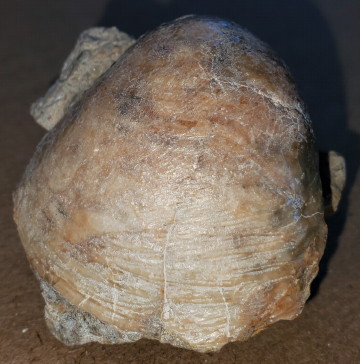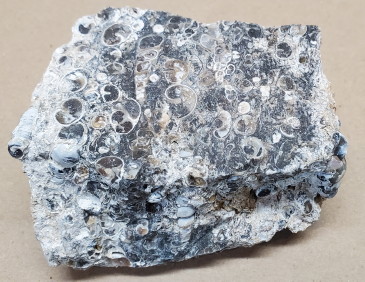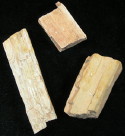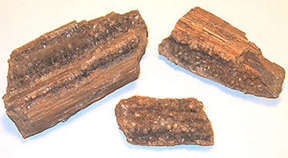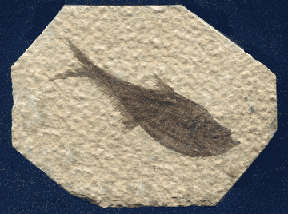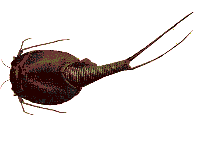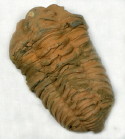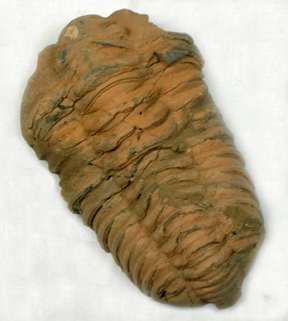Product
(hover for detail) |
Item # |
Item Description |
Price |
|
F345 |
Lace Fern - Check out these really nice Pennsylvanian Period ferns from the fossil-bearing Llewellyn Formation located in the the Southern Anthracite Coal Fields of eastern Pennsylvania.
The formation is composed of a fine-grained detrital sedimentary rock (shale) formed by the compaction of clay and silt. These seed ferns accumulated in the fresh-water swamps, where they were buried. The plant tissue was slowly replaced by pyrite which was eventually covered by a white coating of the mineral pyrophyllite. Specimen is about 2.0" long. Reduced Price! Was $3.50
|
$3.00 each
|
|
F346 |
Large Lace Fern - Coal Fern - Alethopteris sp. (Pennsylvanian) - These Coal fern leaf impressions on shale are from the Buck Mountain #5 Coal seam located along the boundary of the Upper Sharp Member of the Pottsville and Allegheny Series.
These nice specimens are about 3.5" in size. |
$20.00 each
|
|
F5315 |
Ammonite - Class Cephalopod - Genius Perisphinctes from Late Jurassic (~160 mya), collected in Madagascar. Ammonites are predatory mollusks that had eyes, tenacles & sprial shells; and lived in normal marine salinity environments.
Size range from about 1.25" to 1.75", lightly polished & white to cream colored. |
$10.00 each
|
|
F5316 |
Ammonite - Class Cephalopod - Genius Goniatite from Middle Devonian (~390 mya), collected in Morocco. Ammonites are predatory mollusks that had eyes, tenacles & sprial shells; and lived in normal marine salinity environments.
Size range from about 1.75" to 2.25", highly polished and black & white in color. |
$16.00 each
|
|
F4302 |
Horn Coral (Subclass Rugosa - (Tabulophyllum sp.) - Each of these solitary, cylindrical specimens are unique. Their exteriors are covered with longitudinal ridges and concentric wrinkles and growth lines. Size will vary from 1.25" - 2.25".
Horn Coral are widespread in North America and were very common in the Mississippian period. Our specimens are over 325 million years old and are from Millard County, Utah. |
$1.50 each
|
F4302
10 pk |
Horn Coral - 10 pack (Subclass Rugosa - (Tabulophyllum sp.) These pieces are smaller than the individual specimens (above), ranging in size from 0.75" to 1.25", and are from Millard County, Utah. |
$10.00 - 10 pk
|
|
F5340L |
Gastropods (large) - Cassiope sp. - Approximately 1.75" in length. This is an excellent example of a
Cretaceous Period gastropod from Iron County, Utah. These detailed authentic fossil "casts" were formed when the original organic material inside the shell was replaced by calcite over millions of years. For additional information about different "types" of fossils, see our Fossil Type Kit - Item 312-000, listed above. |
$7.00 each
|
|
F5340S |
Gastropods (small) - These small gastropods, Tylostoma sp., are approximately 1.0" long. Gastropods (uni-valves), the largest class of mollusks, are covered with one hard armor-like coiled shell which protects the soft bodies. Gastropods, have a belly foot, which is a large muscular foot that spreads beneath the body that allows them to crawl by means of ripples that pass across the belly foot. |
$3.00 each
|
|
F5180 |
Brachiopod (large) - Dictyoclostus bassi C - lived during the Permian (~275 mya). Braciopods are referred to as Lamp Shells. The outer shell is made of two unequal valves. This specimen was found in the Kiabab formation in Washington County, Utah.
Size range from about 1.50" to 1.75" across. Reduced Price! Was $10.00 |
$8.00 each
|
|
F5400 |
Pelecypod Oyster - Ostrea sp - Oysters are bivalve mollusks, most of which live in marine habitats or brachish water. The shell consists of two unusually highly calcified valves surrounding a soft body. This oyster is from the Cretaceous period, found in Strait Cliffs, Utah.
Size range from about 2.25" to 3.5" long. The photo shows two specimens, one showing the slightly concave inner shell and the other showing the rough outer shell (artifical gloss finish to better show characteristics of the shell). Reduced Price! Was $10.00 |
$8.00 each
|
|
F5410 |
Pelecypod Oyster - Gryphaea arcuata - This oyster (bivalve mollusk) is commonly referred to as the "Devil's toenail" because it has a larger gnarly-shaped shell ("toenail") and a smaller flattened shell. The soft bodied oyster lived in the gap between the two shells. This oyster is from the Cretaceous period, found in Utah.
Size range from about 1.25" to 2.0" long. |
$4.50 each
|
|
F5415 |
Pelecypod Oyster - Gryphaea newberryi - Oysters of the Gryphaea genius (bivalve mollusks) are all commonly referred to as the "Devil's toenail" because they have a larger gnarly-shaped shell ("toenail") and a smaller flattened shell. The soft bodied oyster lived in the gap between the two shells. This oyster is from the Cretaceous period, found in Iron County, Utah.
Size is about 1.0" long. |
$2.50 each
|
|
F5420 |
Pelecypod Clam - Cyrena securis - Clams are bivalve (two-shelled) mollusks and are related to oysters and mussels, all from the Class Pelecypoda. They lived primarily on the shorelines of oceans (marine) and lakes (freshwater). This specimen is from the Cretaceous periiod and was found in Iron County, Utah.
Specimen is about 1.25" long. |
$4.00 each
|
|
F5700 |
Turritella or Elimia Agate - These gastropod mollusks are medium sized snails that are white to tan in color in contrast with the brownish quartz agate rock matrix they are found. When this fossiliferous rock was first discovered it was believed to contain marine snails from the Turritella genus. However, it was later determined that these actually were freshwater snails, Elimia tenera. These specimens are from the Green River Formation in Wyoming.
Medium in rock matrix about 1.25", 2 pack.
Large in rock matrix about 3.0", 1 each. |
Medium - $5.00
Large - $10.00
|
|
F395 |
Petrified Wood - Petrified forms when plant material is buried by sediment and protected from decay. Then, groundwater rich in dissolved solids flows through the sediment replacing the original plant material with silica, calcite, pyrite or another inorganic material. The result is a fossil of the original woody material.
Small; about 1.0", 1 each
Medium; about 1.5", 1 each
Large; about 3.0", 1 each
|
Small - $3.00
Medium - $4.00
Large - $10.00
|
|
F396 |
Petrified Wood with Quartz Crystals - Petrified wood is a fossil, where the organic matter in the original tree was completely replaced by minerals. These specimens have a crystalized core of tiny quartz crystals.
- F396S - Small; about 1.0", 1 each.
- F396M - Medium; about 1.75", 1 each.
|
|
|
F350 |
The fossil fish for sale here are from the Eocene Period of the Green River Formation located in Southwestern Wyoming. Check the Knightia and Diploymystus page for sizes and prices. |
$10.00
to
$90.00 |
|
F308 |
Triops Kits Before the dinosaurs, there were Triops. Fossil Triops more than 200 million years old have been discovered. By comparison, dinosaurs date back only about 60 million years...just 'youngsters" in terms of geologic time.
Triops are distant relatives of trilobites. Triops means " three-eyes" while the name trilobite means "three lobed" or "three segments. Check out the Triops page for a listing of the different triops kits. |
$6.00
to
$14.00 |
|
F1650 to F1652 |
Trilobites are a type of extinct marine arthropod probably most closely related to modern Horseshoe crabs. They first appeared in the fossil record in the Early Cambrian some 521 MYA and went extinct some 252 or more MYA during the Permian period. We offer three types of trilotibes. They are the Diacalymene ouzregui sp, the Elrathia kingi and the Agnostid. Go to the Trilobites page for price list and types. |
$4.00
to
$15.00 |
|
|
